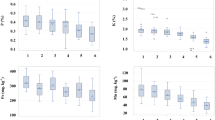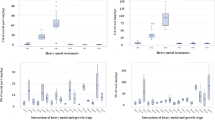Abstract
To screen out plants with hyperaccumulation of heavy metals and explore the effects of root exudates on the phytoremediation in contaminated soils. The germination rates of five plants including Lolium perenne L. (L. perenne), Sorghum sudanense (Piper) Stapf. (S. sudanense), Pennisetum alopecuroides (L.) Spreng. (P. alopecuroides), Medicago sativa L. (M. sativa), and Trifolium repens L. (T. repens) in different concentrations of cadmium ion solution (0–100 mg/kg) were determined. The growth adaptability of these five plants under conditions of contaminated soils with the above cadmium ion concentrations was also evaluated. S. sudanense and P. alopecuroides had higher germination rates and better growth than the three other plants and were selected as the latter experimental varieties. The activation amounts of cadmium ion in soils were measured using AAS in the presence of three types of root secretions (citric acid, glycine, and maltose) with different concentrations (10–500 mmol/L). The activation amounts decrease in the following order: citric acid > glycine > maltose. The effect of these three root exudates on the removal of cadmium-contaminated soils in combination with S. sudanense and P. alopecuroides was also tested. For S. sudanense and P. alopecuroides, the maximum biomass and removal rate reaches the maximum at 100 mmol/L of citric acid. Conversely, low concentrations (approximately 10–50 mmol/L) of glycine and maltose are more effective for plant growth and phytoremediation. The addition of citric acid at 100 mmol/L and approximately 10–50 mmol/L of glycine and maltose can effectively promote the transfer of cadmium ion from roots to leaves and the accumulation of cadmium ion in leaves.









Similar content being viewed by others
References
Agnello AC, Bagard M, Van Hullebusch ED, Esposito G, Huguenot D (2016) Comparative bioremediation of heavy metals and petroleum hydrocarbons co-contaminated soil by natural attenuation, phytoremediation, bioaugmentation and bioaugmentation-assisted phytoremediation. Sci Total Environ 563:693–703
Berg G (2009) Plant–microbe interactions promoting plant growth and health: perspectives for controlled use of microorganisms in agriculture. Appl Microbiol Biotechnol 84(1):11–18
Chen H, Teng Y, Lu S, Wang Y, Wang J (2015) Contamination features and health risk of soil heavy metals in China. Sci Total Environ 512:143–153
Chen J, Shafi M, Wang Y, Wu J, Ye Z, Liu C, Zhong B, Guo H, He L, Liu D (2016) Organic acid compounds in root exudation of Moso bamboo (Phyllostachys pubescens) and its bioactivity as affected by heavy metals. Environ Sci Pollut Res 23(20):20977–20984
Cunningham SD, Anderson TA, Schwab AP, Hsu FC (1996) Phytoremediation of soils contaminated with organic pollutants. Adv Agron 56(1):55–114
Deshmukh RK, Vivancos J, Ramakrishnan G, Guérin V, Carpentier G, Sonah H et al (2015) A precise spacing between the NPA domains of aquaporins is essential for silicon permeability in plants. Plant J 83(3):489–500
Gaby JC, Buckley DH (2011) A global census of nitrogenase diversity. Environ Microbiol 13(7):1790–1799
Gerhardt KE, Huang XD, Glick BR, Greenberg BM (2009) Phytoremediation and rhizoremediation of organic soil contaminants: potential and challenges. Plant Sci 176(1):20–30
Hou Y, Liu X, Zhang X, Chen X, Tao K, Chen X et al (2015) Identification of Scirpus triqueter root exudates and the effects of organic acids on desorption and bioavailability of pyrene and lead in co-contaminated wetland soils. Environ Sci Pollut Res 22(22):17780–17788
Hou Y, Liu X, Zhang X, Chen X, Tao K (2016) Effects of key components of Scirpus triqueter root exudates on fractions and bioavailability of pyrene–lead co-contaminated soils. Int J Environ Sci Technol 13(3):887–896
Huang H, Yu N, Wang L, Gupta DK, He Z, Wang K, Zhu Z, Yan X, Li T, Yang XE (2011) The phytoremediation potential of bioenergy crop Ricinus communis for DDTs and cadmium co-contaminated soil. Bioresour Technol 102(23):11034–11038
Huang G, Guo G, Yao S, Zhang N, Hu H (2016) Organic acids, amino acids compositions in the root exudates and cu-accumulation in castor (Ricinus communis L.) under cu stress. Int J Phytoremediation 18(1):33–40
Islam E, Liu D, Li T, Yang X, Jin X, Mahmood Q et al (2008) Effect of Pb toxicity on leaf growth, physiology and ultrastructure in the two ecotypes of Elsholtzia argyi. J Hazard Mater 154(1–3):914–926
Jien SH, Lin YH (2018) Proteins in xylem exudates from rapeseed plants (Brassica napus L.) play a crucial role in cadmium phytoremediation. CLEAN Soil Air Water 46(10):1700164
Ma Y, Rajkumar M, Zhang C, Freitas H (2016) Beneficial role of bacterial endophytes in heavy metal phytoremediation. J Environ Manag 174:14–25
Mahar A, Wang P, Ali A, Awasthi MK, Lahori AH, Wang Q, Li R, Zhang Z (2016) Challenges and opportunities in the phytoremediation of heavy metals contaminated soils: a review. Ecotoxicol Environ Saf 126:111–121
Milone MT, Sgherri C, Clijsters H, Navari-Izzo F (2003) Antioxidative responses of wheat treated with realistic concentration of cadmium. Environ Exp Bot 50(3):265–276
Muratova A, Golubev S, Wittenmayer L, Dmitrieva T, Bondarenkova A, Hirche F et al (2009) Effect of the polycyclic aromatic hydrocarbon phenanthrene on root exudation of Sorghum bicolor (L.) Moench. Environ Exp Bot 66(3):514–521
Pandey VC, Bajpai O, Singh N (2016) Energy crops in sustainable phytoremediation. Renew Sust Energ Rev 54:58–73
Sarwar N, Imran M, Shaheen MR, Ishaque W, Kamran MA, Matloob A et al (2017) Phytoremediation strategies for soils contaminated with heavy metals: modifications and future perspectives. Chemosphere 171:710–721
Tauqeer HM, Ali S, Rizwan M, Ali Q, Saeed R, Iftikhar U, Ahmad R, Farid M, Abbasi GH (2016) Phytoremediation of heavy metals by Alternanthera bettzickiana: growth and physiological response. Ecotoxicol Environ Saf 126:138–146
Wang K, Zhang J, Zhu Z, Huang H, Li T, He Z et al (2012) Pig manure vermicompost (PMVC) can improve phytoremediation of Cd and PAHs co-contaminated soil by Sedum alfredii. J Soils Sediments 12(7):1089–1099
Wei G, Fan L, Zhu W, Fu Y, Yu J, Tang M (2009) Isolation and characterization of the heavy metal resistant bacteria CCNWRS33-2 isolated from root nodule of Lespedeza cuneata in gold mine tailings in China. J Hazard Mater 162(1):50–56
Willscher S, Jablonski L, Fona Z, Rahmi R, Wittig J (2017) Phytoremediation experiments with Helianthus tuberosus under different pH and heavy metal soil concentrations. Hydrometallurgy 168:153–158
Xie Y, Fan J, Zhu W, Amombo E, Lou Y, Chen L, Fu J (2016) Effect of heavy metals pollution on soil microbial diversity and bermudagrass genetic variation. Front Plant Sci 7:755
Yanai J, Zhao FJ, McGrath SP, Kosaki T (2006) Effect of soil characteristics on Cd uptake by the hyperaccumulator Thlaspi caerulescens. Environ Pollut 139(1):167–175
Balseiro-Romero M, Kidd PS, Monterroso C (2014) Influence of plant root exudates on the mobility of fuel volatile compounds in contaminated soils. Int J Phytoremediation 16(7–8):824–839
Funding
The authors were given financial support from the “13th five-year” National Major Science and Technology Project of China (No. 2016ZX05040-002).
Author information
Authors and Affiliations
Corresponding author
Additional information
Responsible Editor: Philipp Gariguess
Publisher’s note
Springer Nature remains neutral with regard to jurisdictional claims in published maps and institutional affiliations.
Rights and permissions
About this article
Cite this article
Chen, C., Li, Z., Li, S. et al. Effects of root exudates on the activation and remediation of cadmium ion in contaminated soils. Environ Sci Pollut Res 27, 2926–2934 (2020). https://doi.org/10.1007/s11356-019-07263-8
Received:
Accepted:
Published:
Issue Date:
DOI: https://doi.org/10.1007/s11356-019-07263-8




